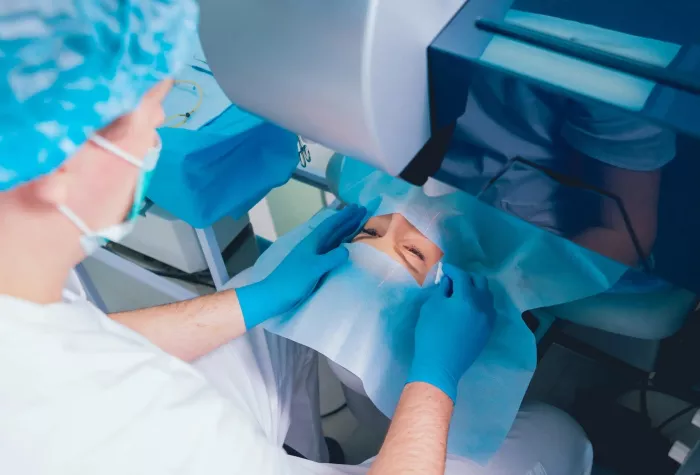The retina is a vital part of the eye that captures light and sends visual signals to the brain. When the retina is damaged due to conditions like retinal detachment, diabetic retinopathy, or macular degeneration, surgery may be required to restore or preserve vision. There are several types of retinal surgery, each designed to address specific issues.
This article will provide a detailed overview of the most common types of retinal surgery, including how they work, what to expect during recovery, and their benefits and risks. By the end, you’ll have a clear understanding of the options available and how they can help protect your vision.
Common Types of Retinal Surgery
1. Laser Photocoagulation
Purpose: Used to treat retinal tears, diabetic retinopathy, and macular edema.
Procedure: A laser is used to create small burns around the damaged area, sealing leaks or reattaching the retina.
Recovery: Minimal downtime; patients can usually resume normal activities within a day.
Risks: Temporary blurred vision, mild discomfort, or scarring.
2. Cryopexy
Purpose: Repairs retinal tears or detachments.
Procedure: A freezing probe is applied to the outer surface of the eye to freeze and seal the retina.
Recovery: Slight redness or swelling; full recovery takes 1-2 weeks.
Risks: Temporary discomfort or blurred vision.
3. Pneumatic Retinopexy
Purpose: Treats retinal detachment.
Procedure: A gas bubble is injected into the eye to push the retina back into place. The patient must maintain a specific head position for several days.
Recovery: The gas bubble dissolves in 2-6 weeks; avoid flying during this time.
Risks: Increased eye pressure or cataract formation.
4. Scleral Buckling
Purpose: Repairs retinal detachment.
Procedure: A silicone band is placed around the eye to push the wall closer to the detached retina.
Recovery: Moderate discomfort; full recovery takes 2-4 weeks.
Risks: Double vision, infection, or changes in eye shape.
5. Vitrectomy
Purpose: Treats retinal detachment, macular holes, or diabetic retinopathy.
Procedure: The vitreous gel inside the eye is removed and replaced with a gas bubble, silicone oil, or saline solution.
Recovery: Vision may be blurry for several weeks; avoid strenuous activities.
Risks: Cataract formation, increased eye pressure, or infection.
6. Macular Hole Surgery
Purpose: Repairs holes in the macula (the central part of the retina).
Procedure: A vitrectomy is performed, and a gas bubble is injected to flatten the macula.
Recovery: Patients must maintain a face-down position for several days.
Risks: Cataracts or retinal detachment.
7. Epiretinal Membrane Peeling
Purpose: Removes scar tissue from the retina.
Procedure: The membrane is gently peeled away during a vitrectomy.
Recovery: Vision improves gradually over several weeks.
Risks: Infection or retinal tears.
Factors to Consider When Choosing a Surgery
The type of retinal surgery recommended depends on several factors, including:
- The specific retinal condition.
- The severity of the damage.
- The patient’s overall eye health.
- The surgeon’s expertise.
Your eye doctor will evaluate your condition and recommend the best option for you.
Recovery After Retinal Surgery
Recovery varies depending on the type of surgery, but here are some general guidelines:
Immediate Aftercare:
- Use prescribed eye drops to prevent infection and reduce inflammation.
- Wear an eye shield at night to protect the eye.
Activity Restrictions:
- Avoid strenuous activities, heavy lifting, or bending over for several weeks.
- Follow your surgeon’s instructions on when to resume normal activities.
Follow-Up Appointments:
Regular check-ups are essential to monitor healing and check for complications.
Vision Changes:
- Your vision may be blurry or distorted during recovery.
- It may take weeks or months for your vision to stabilize.
Risks and Complications
While retinal surgery is generally safe, it does carry some risks, including:
- Infection.
- Bleeding.
- Increased eye pressure.
- Cataract formation.
- Vision loss (rare).
Your surgeon will discuss these risks with you and take steps to minimize them.
Conclusion
Retinal surgery is a vital treatment option for individuals with retinal conditions that threaten their vision. By understanding the different types of surgery, their benefits, and what to expect during recovery, you can approach treatment with confidence. If you’re experiencing symptoms like floaters, flashes of light, or vision loss, consult an eye specialist promptly. Early intervention can make a significant difference in preserving your sight.
If you have more questions about retinal surgery or need personalized advice, don’t hesitate to reach out to your eye care provider. Your vision is precious, and taking proactive steps to protect it is always worth it.
Frequently Asked Questions
1. How long does retinal surgery take?
Most procedures take 1-2 hours, but this can vary depending on the complexity.
2. Is retinal surgery painful?
Local or general anesthesia is used, so you shouldn’t feel pain during the procedure. Some discomfort may occur during recovery.
3. Can I drive after retinal surgery?
You’ll need someone to drive you home after surgery. Avoid driving until your doctor approves.
4. Will I need multiple surgeries?
In some cases, additional procedures may be needed to achieve the best results.
5. What happens if I don’t get surgery?
Without surgery, retinal conditions can lead to permanent vision loss or blindness.
Related topics:
Can Eye Surgery Correct Astigmatism? All You Need to Know
5 Best Surgeries for Your Eye Correction: You Should Know

